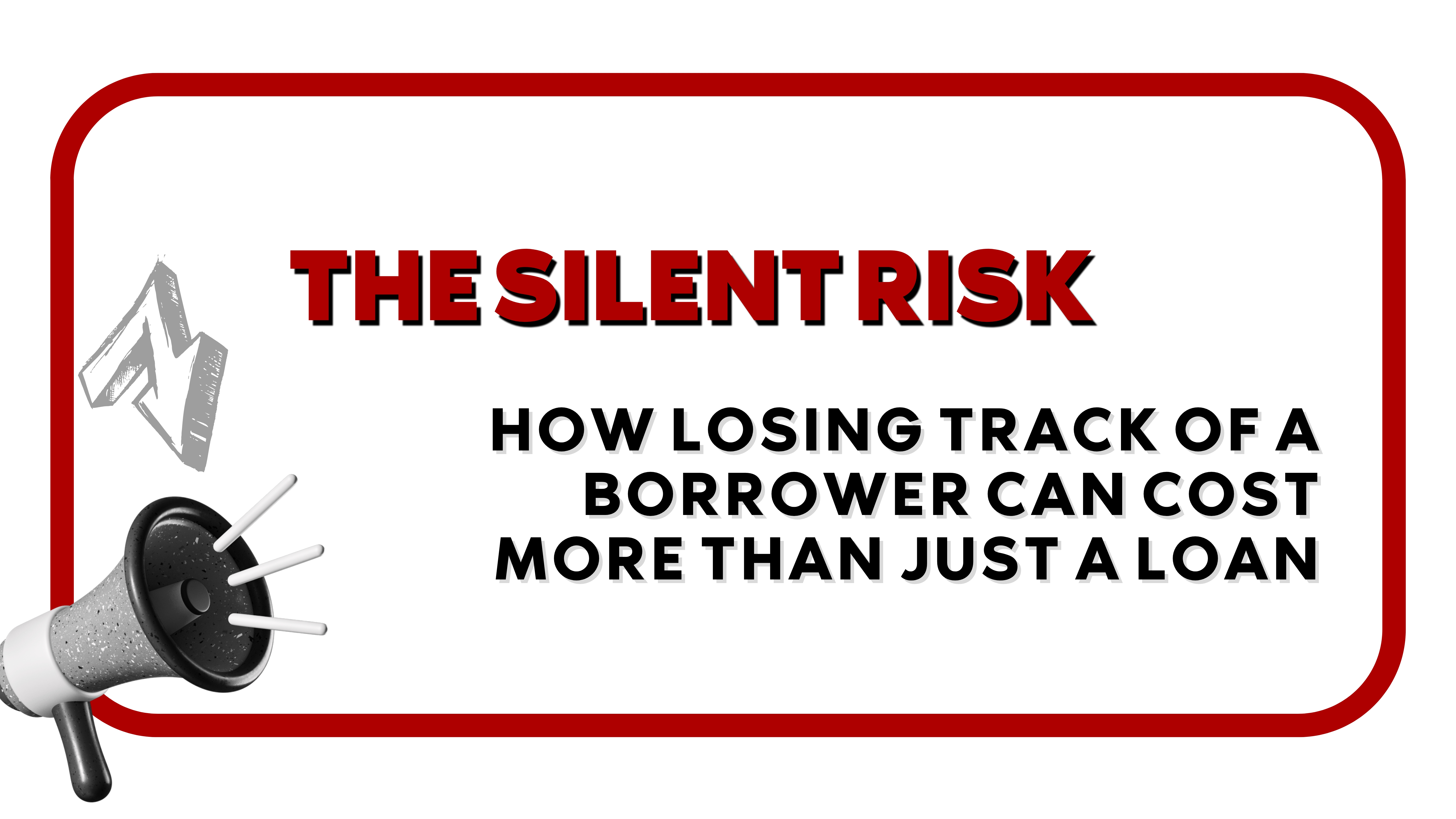The Silent Risk: How Losing Track of a Borrower Can Cost More Than Just a Loan

Introduction:
It starts as a simple oversight—a missed email, a phone call postponed for tomorrow. But tomorrow turns into next week, and before you know it, that once-promising borrower is no longer returning your calls. You shrug it off, thinking, “I’ll get the next one,” but deep down, you know something was lost. It wasn’t just a loan. It was trust. It was a relationship. And those are hard to get back once they’re gone.
A Story We All Know Too Well:
Meet Sarah, a seasoned lender with a reputation for closing complex deals. She had a borrower who was ready—motivated, qualified, and eager to move forward. In the beginning, everything felt right. They had multiple conversations and shared excitement about the project, and everything seemed to be on track.
But then life happened.
Sarah got pulled into other urgent deals, meetings stacked up, and her focus shifted. “I’ll get back to them tomorrow,” she thought. Tomorrow came and went. Weeks passed. When she finally reached out again, her borrower had already moved on—go with another lender who simply showed more interest.
That borrower? They went on to complete several successful projects… just not with Sarah.
It wasn’t the terms that lost the deal—it was the lack of attention. And Sarah wasn’t just out one loan. She was out in a long-term relationship. The kind that keeps a business growing.
The Emotional Cost of Losing a Borrower:
The sting of losing a borrower is about more than just the missed revenue. It’s personal. It feels like a failure, like you let someone down. You replay the moments in your head: “If only I had sent that follow-up sooner… If only I’d checked in…” But it’s too late.
What Sarah experienced isn’t unique—it’s a familiar story for many lenders, no matter how successful they are. We get busy. We prioritize other deals. We assume the borrower will wait. But the truth is, that borrowers have options. And in this world, being forgotten is the same as being unwanted.
What Are You Losing?
When a borrower drifts away, you’re not just losing a single loan. The impact runs much deeper:
- The Trust Factor: Borrowers need to feel like they matter, and that you’re invested in them beyond the deal. When communication fades, trust fades with it. And trust, once broken, is hard to rebuild.
- The Ripple Effect: Each borrower represents a chain of future opportunities—referrals, repeat business, and reputation. Losing one borrower might mean losing a network of future clients you’ll never meet.
- Reputation Erosion: It’s not just the borrower who knows you dropped the ball. They talk. Word spreads. And in a world where reputation is everything, even one missed connection can create a ripple of doubt in the market.
- The Competition Factor: Other lenders are just waiting to swoop in where you’ve stepped back. The moment you lose focus, someone else is ready to grab the borrower’s attention and loyalty.
How to Stop Losing Borrowers Before It’s Too Late:
It’s time to face the truth—losing a borrower is preventable. It doesn’t require superhuman effort, just a consistent, thoughtful approach. Here’s how you can keep your borrowers close, even when life gets busy.
1. Make Every Borrower Feel Valued
This is more than business; it’s about human connection. Send a quick check-in text, and ask about their progress—even if the deal’s still in process. A little acknowledgment goes a long way in making someone feel valued and remembered.
2. Automate, but Don’t Lose the Human Touch
Automation is great for reminders, but make sure your messages don’t feel robotic. Personalize your automated check-ins with small details specific to that borrower. Show them that you’re paying attention to their unique situation.
3. Anticipate Their Needs
Borrowers don’t always know what they need until you show them. Be proactive. If you see a delay in paperwork or progress, don’t wait for them to reach out. Stay ahead and guide them through, showing that you care about moving things forward.
4. Follow Up Like It’s Your Job—Because It Is
If you’re waiting for the “right time” to follow up, you’ve already waited too long. A quick touchpoint, even if there’s no new update, keeps you at the forefront of their mind. It’s better to over-communicate than to leave them wondering if you’re still on board.
Conclusion – It’s Not Just Business, It’s Personal:
In lending, it’s easy to get caught up in numbers and deals. But behind every loan is a person, a relationship that needs nurturing. Borrowers aren’t just transactions—they’re people trusting you to help them achieve something meaningful. Don’t let them slip through the cracks because you’re too focused on the next big deal.
Sarah learned the hard way, but you don’t have to. Every borrower has a chance to build something long-term, something more than just a single deal. Keep them close, or watch them walk away.
